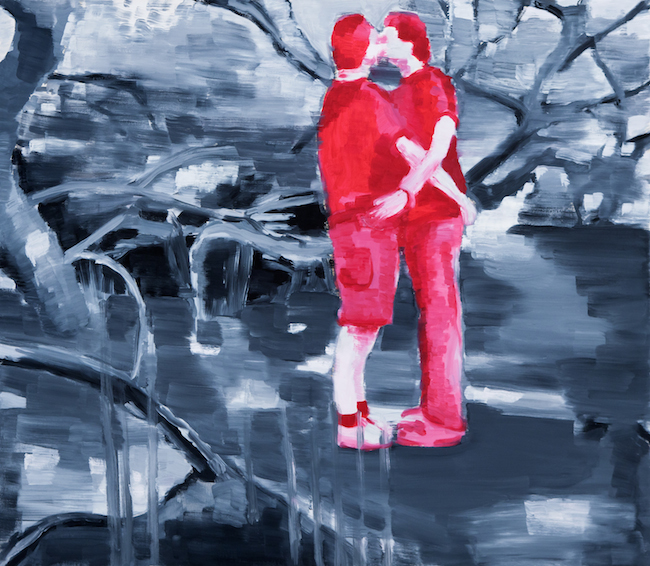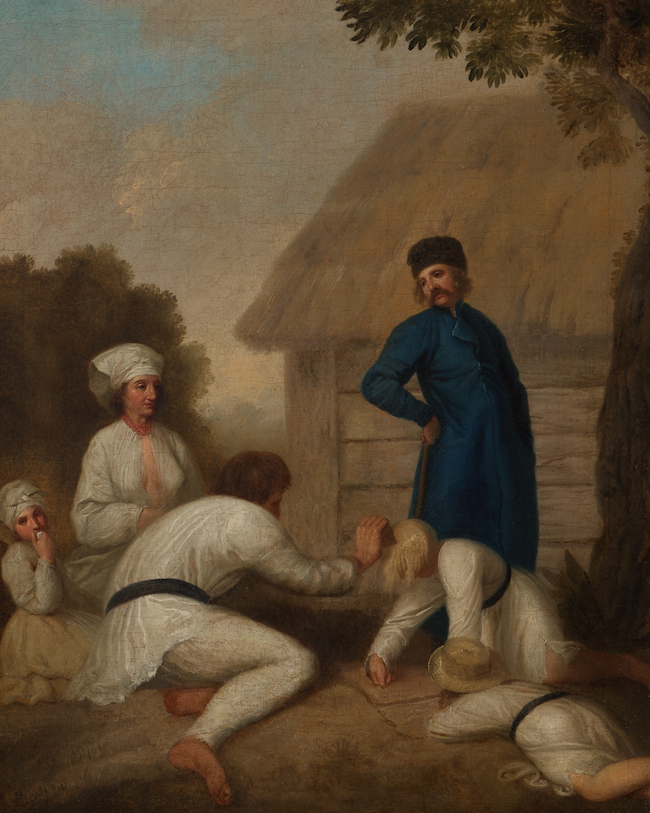
The Lewben Art Foundation Collection
From the Lithuanian Diaspora to Luminaries of International Biennales
13/07/2015
At the sixth reiteration of the contemporary art fair ArtVilnius, a part of the Lewben Art Foundation was presented in the PROJECT section of the fair. Luminaries of the Tate, MoMA and international biennale scene – such as Tony Cragg, Thomas Haouseago, Charles Avery and Erwin Wurm – require no introduction in the context of the contemporary art world. Naturally, an exhibition in Vilnius featuring the works of these artists is an important new marker in the context of Lithuania's own contemporary art scene. For this presentation, as well as for the creation of the collection itself, the Lewben Art Foundation has employed the services of Italian curator Francesca Ferrarini, an experienced collection consultant for art institutions in Italy, Great Britain and Brazil.
International contemporary-art heavyweights, however, do not make up the bedrock of the Foundation's collection. Their participation is more of a strategic step in raising Lithuania's own art and artists to a higher and more prominent level in terms of international recognition. In 2013 Vilius Kavaliauskas, head of the Lithuanian-based international financial and management consulting firm Lewben Group, established the Lewben Art Foundation. The Lithuanian Expatriate Art Foundation – which actively promotes the recognition of artists in the Lithuanian diaspora, as well as the return of their works to their native land – was established under the wing of the Lewben Art Foundation. Among these diaspora artists are Lithuanian Jews, or Litvaks, including one of the grand masters of the 20th-century avant-garde, Marc Chagall, who was born in a Lithuanian Jewish family.
Along with the Lithuanian diaspora collection, the Lewben Art Foundation also collects works by in-country Lithuanians – from classics of Lithuanian modernism, expressionism and fauvism, to the masters of Lithuanian photography and the biggest names in contemporary art, as well as the most promising newcomers to the art scene.
The Lewben Art Foundation not only organizes exhibitions in cooperation with art historians, curators, artists and cultural foundations – it also provides financial support, such as for last autumn's exhibition of the works of Deimantas Narkevicius, “Sounds Like the XX Century”, at Vilnius's Vartai gallery. Another example of Lewben's largesse is the execution of the largest ever site-specific installation, “Scarecrow”, in New York's Socrates Sculpture Park in 2014. It was created by Žilvinas Kempinas, a New York-based Lithuanian master of kinetic installations. The Foundation also financially supports the publishing of art books and monographs, such as that of the acclaimed Lithuanian-American painter Kęstutis Zapkus.
In 2013 the Foundation became a founder of non-profit organization Artnews, which runs such media projects as artnews.lt, artbooks.lt, Kita/fotografija, and Echo Gone Wrong.

Vilius Kavaliauskas
While at the ArtVilnius fair, had the opportunity to sit down for a short chat with Vilius Kavaliauskas, the founder of the Lewben Art Foundation, and talk about the organization's main functions.
Could you give us a brief outline of the developmental history of the Lewben Art Foundation? Did the collection start from nothing?
Yes, it started as a private collection that began with nothing. The first section we developed was the Lithuanian Expatriate Art Foundation, through which we began to gather information on the artistic works of Lithuanian emigrants. These included artists who were forced to leave Lithuania in the 19th century and during WWI, and who left for the USA, Latin America, France... For the most part they were well-known, recognized artists, but we also discovered lesser-known Lithuanians about whom there wasn't much information, and whose works were scattered around the world and owned by various families. We held on to the idea that we would like for these works to return home.

Marc Chagall. The Dream
Later on we began the exhibition series. The first one was “Bronze People. Indian Spirit Revealed”, by the Bolivian-based artist Jonas Rimša, which was held in the M. Žilinskas Art Gallery in Kaunas, in 2013. This year his exhibition “The Magic of Fire and Jungle” took place at the Vytautas Kasiulis Art Museum in Vilnius.
Then we organized an exhibition of École de Paris artists of Lithuanian-Jewish heritage – “Hello, Paris! The Path of Litvak Artists”, also at the M. Žilinskas Art Gallery. Among the exhibited works were those of Marc Chagall, who was born in a Lithuanian-Jewish family not far from Vitebsk.
As the art collection had developed and no longer concentrated exclusively on diaspora artists, we had to somehow define and include the rest of the collection's pieces. Thus the establishment of the Lewben Art Foundation.
Alfredo Jaar. Gold in the Morning D, 1985
Does the Foundation currently have its own exhibition space?
Not yet, but we're actively planning one. One possibility is a 1000-square-meter room in which from time to time we would place the collection and which we would open intermittently for public viewing; we would concurrently organize international contemporary art exhibitions of well-known international artists.
How do you envision the international collection? What kind of art is at its focus?
We concentrate on young artists who have already established themselves on the art scene, and whose works can be found in world-level museums and renown private collections.
Could you tell us about the Foundation's curatorial practice? How do you select curators for your exhibitions, and how do you involve experts in the evolution of the collection?
In terms of exhibiting local artists, it's relatively simple – we select local Lithuanian curators who specialize in the fields and specifics in question, whether it be Jewish art, modernism or contemporary art. For the exhibition and development of our collection of international contemporary art, we employed the services of Italian curator Francesca Ferrarini. She was also the curator for ArtVilnius.

Vytautas Kasiulis. Portrait Painter, 1947
Returning to Lithuanian art – one of the Foundation's goals is to make Lithuanian art known beyond the country's borders. What have you been doing to achieve this goal?
For a small country without historical channels of bringing artists to prominence, it's not an easy thing to do. Especially those that are well-known here, but have already reached a venerable age or are no longer among the living. Last year I became a member of Russian and Eastern European Acquisitions Committee at one of the biggest museums of the world - London based Tate Modern. It's great that the Tate has finally begun to look at our region, and the Committee also concentrates on acquiring works from the most notable artists hailing from the Baltic States. They began this activity three or four years ago, I believe. This is our chance to present to the Tate our greatest – although obscure on an international level – artists. So this is one of our methods of popularization. The second one would be our decision to include an international contemporary art section to our collection, because in that way we make it easier for international artists and curators to relate to the Lewben Foundation.

Jonas Švažas. Red Pipes, 1976
Do you think that a concept like “national art” is even possible in the context of today's art?
It is possible that in the world of contemporary art, such a concept isn't valid. However, artists of the modern post-soviet era do have their own unique signature and identity.
How would you describe this signature and identity?
It is difficult to characterize it in one broad stroke, but the artists of the time were oppressed and they didn't have real freedom to express themselves – this can be inferred from their works. Perhaps those who don't have an encompassing knowledge of the soviet regime have a more difficult time in seeing this, but for those of who do, it is clearly visible. Consider it – dark shapes and the use of dark colors; Western modern artists had a more active color choice and a greater freedom of expression.

Andrius Zakarauskas. Green Brushstroke, 2008
How did your own interest in art begin?
Simply by purchasing art to display in my own home. I am an aesthete. Most of the art that I have collected has an aesthetic quality.
For you, is art more about aesthetics than ideas?
For me, personally – yes. Since I'm not an art professional, I look with my eyes, but I do try to grasp something more. And contemporary art is about ideas. It's not even possible to talk about it just in the categories of aesthetics. It is about meaning. However, the exhibition that took place during ArtVilnius, for example, was absolutely about aesthetics – about the aesthetics of contemporary figural painting and contemporary sculpture. Of course, all of the Foundation's collections are more or less subjective, even though the curators help keep them on a certain course.

Adomas Danusevičius. Somewhere in the Bush, 2011
What sort of responsibility do you, as the head of the Foundation, feel?
The foundation's main idea is to be open and accessible to the public, to educate people through showing and speaking. That's why I believe that my responsibility is to put all of my effort into making sure that all of the Foundation's artistic wealth is open and unhidden. Another important thing is ensuring that young people see the whole thing as relevant and interesting. And to open up the doors to the international art market for emerging artists.
Does the Foundation have any plans for educational youth programs?
Not yet. This is actively being done by the Vilnius Contemporary Art Centre (CAC), Modern Art Center and the National Art Gallery; I don't see the necessity for the Foundation to do these same things as well. My opinion is that we do our educational duty through the exhibitions that we organize and other activities, such as publishing.

Pranciškus Smuglevičius. From Lithuanian Peasants' Life
How do you see the future of the Lewben Art Foundation?
Of course, the collection will grow, but it's not our aim to do this in huge leaps and bounds. For the near future, our plans are to organize two or three good exhibitions a year. In terms of the international art section, it will be interesting to continue acquiring the works of new and promising artists, and to see what will happen to them with time. Of course, all of this is linked to the financial situation; various conditions can make things turn out differently... Perhaps the collection will be located elsewhere, but it definitely won't be hidden and it will be available to the public.
Read in Archive: Experiencing ArtVilnius 2015. Cross Section

Domšaitis Pranas. Crucifixion, 1963
